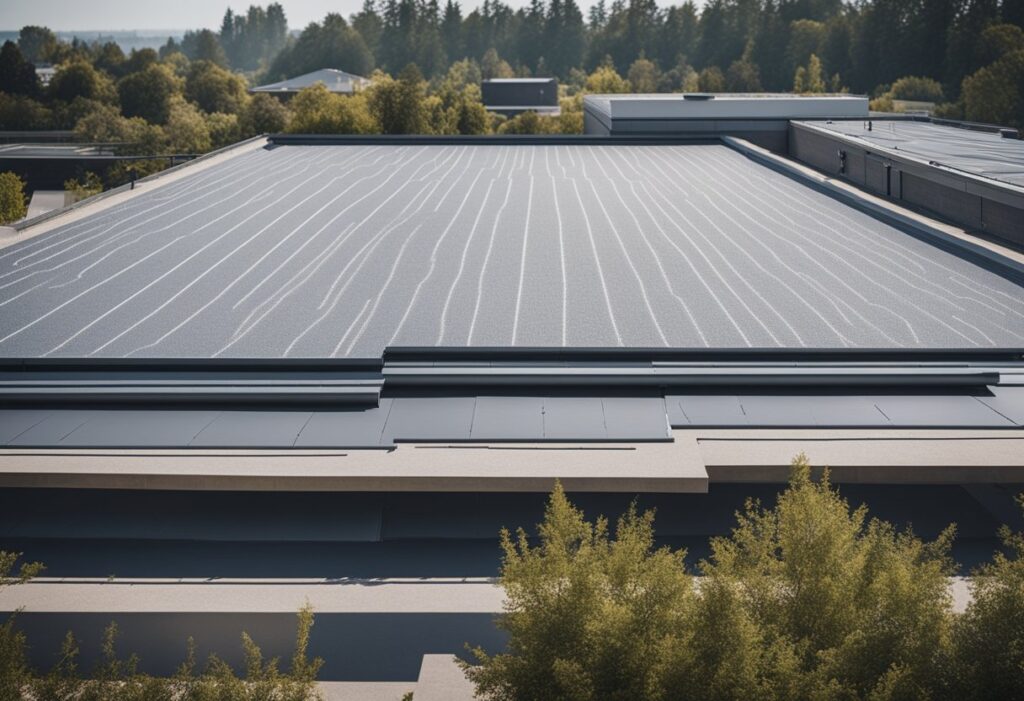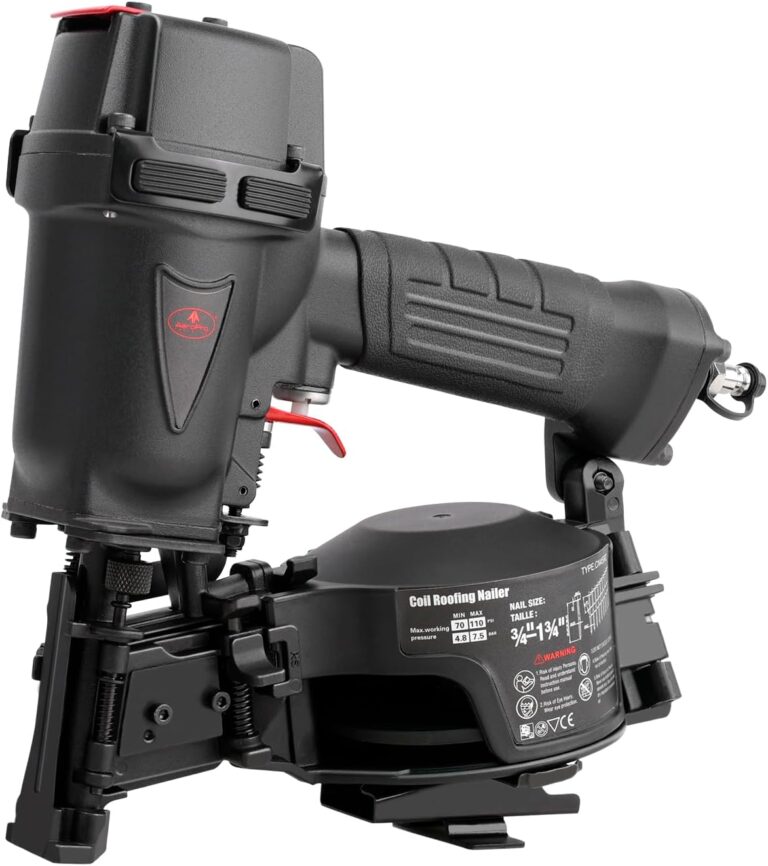Flat roofing systems are a popular choice for commercial and residential buildings. They are known for their affordability, ease of installation, and low maintenance requirements. Flat roofs are also preferred for their ability to provide additional outdoor space for building occupants.

There are several types of flat roofing systems available, including built-up roofs (BUR), modified bitumen roofs (MBR), and single-ply membrane roofs. BUR roofs are made up of multiple layers of tar and gravel, while MBR roofs are made of asphalt and rubber. Single-ply membrane roofs are made of rubber, plastic, or other synthetic materials.
When choosing a flat roofing system, it is important to consider factors such as the building’s location, climate, and intended use. It is also important to hire a professional roofing contractor with experience in installing flat roofs to ensure the roof is properly installed and maintained. Overall, flat roofing systems are a durable and cost-effective option for buildings of all types and sizes.
Fundamentals of Flat Roofing Systems

Flat roofing systems are a popular choice for commercial and residential buildings. They are cost-effective, easy to install, and provide a modern and sleek appearance. However, they require proper design considerations, material selection, and water drainage features to ensure their longevity and performance.
Design Considerations
When designing a flat roofing system, it is essential to consider several factors, such as the building’s location, climate, and intended use. The roof should be designed to withstand the local weather conditions, including high winds, heavy rain, and snow loads. The roof’s slope should be carefully calculated to ensure proper water drainage and prevent ponding.
Material Selection
The choice of roofing material is critical to the success of a flat roofing system. The most common materials used for flat roofs include single-ply membranes, built-up roofing, and modified bitumen. Each material has its advantages and disadvantages, and the selection should be based on the building’s needs and budget.
Single-ply membranes, such as EPDM, TPO, and PVC, are lightweight and easy to install. They are also highly resistant to UV radiation and chemical exposure. Built-up roofing, also known as tar and gravel roofing, is a traditional method that involves layering felt and bitumen. It provides excellent durability and fire resistance but can be heavy and difficult to install. Modified bitumen roofing is a hybrid system that combines the benefits of single-ply and built-up roofing. It is easy to install and provides excellent durability and flexibility.
Water Drainage Features
Flat roofs are prone to water ponding, which can lead to leaks and structural damage. Therefore, proper water drainage features should be included in the design. This can be achieved through the installation of internal drains, scuppers, or gutters. The drainage system should be designed to handle the maximum expected rainfall and prevent water from accumulating on the roof.
In conclusion, flat roofing systems are an excellent option for commercial and residential buildings. However, they require careful consideration of design, material selection, and water drainage features to ensure their longevity and performance. By following these fundamentals, a flat roofing system can provide a cost-effective and durable solution for any building.
Installation Process

Installing a flat roofing system requires a precise process to ensure a long-lasting and leak-free roof. The installation process typically involves three stages: surface preparation, insulation and vapor barriers, and membrane application.
Surface Preparation
The first step in the installation process is to prepare the surface of the roof for the new membrane. The surface must be clean, dry, and free of any debris. Any existing roofing materials, such as shingles or tar, must be removed. The roof surface should be inspected for any damage or defects, such as cracks or holes, and repaired before proceeding.
Insulation and Vapor Barriers
After the surface is prepared, the next step is to install insulation and vapor barriers. Insulation is necessary to prevent heat loss and reduce energy costs. Vapor barriers are used to prevent moisture from entering the roof system and causing damage to the underlying structure.
Membrane Application
The final step in the installation process is to apply the membrane. There are several types of membranes available, including EPDM, TPO, PVC, and modified bitumen. The membrane is typically installed in large sheets and secured in place with adhesive, screws, or other fasteners.
Overall, a flat roofing system installation requires careful planning, precise execution, and attention to detail. By following the proper installation process, a flat roof can provide many years of reliable service.
Maintenance and Repair

Flat roofing systems require regular maintenance and repair to ensure their longevity and effectiveness. This section will cover the key aspects of maintaining and repairing a flat roof, including regular inspections, damage repair methods, and long-term maintenance strategies.
Regular Inspection
Regular inspections are critical to maintaining the health of a flat roof. Inspections should be conducted at least twice a year, in the spring and fall, to identify any potential issues before they become major problems. During inspections, the following should be checked:
- The condition of the roof membrane
- The condition of the flashing
- The condition of the drainage system
- The condition of the roof surface
Damage Repair Methods
If damage is identified during an inspection, it should be repaired as soon as possible to prevent further damage. Damage repair methods vary depending on the type and severity of the damage. Some common repair methods include:
- Patching: Small holes or tears in the roof membrane can be patched with a sealant or patching material.
- Coating: A coating can be applied to the roof surface to provide additional protection against the elements.
- Replacement: In cases of severe damage, it may be necessary to replace the damaged section of the roof membrane or flashing.
Long-Term Maintenance Strategies
In addition to regular inspections and damage repair, there are several long-term maintenance strategies that can help extend the life of a flat roof:
- Regular cleaning: Debris and standing water should be removed from the roof surface to prevent damage to the membrane.
- Proper drainage: The drainage system should be properly maintained to ensure that water is properly directed away from the roof.
- UV protection: A UV-resistant coating or membrane can be applied to the roof surface to prevent damage from the sun’s rays.
By following these maintenance and repair strategies, flat roofing systems can provide reliable protection for many years.
Types of Flat Roofing Materials

When it comes to flat roofing, there are several types of materials that can be used. Each material has its own advantages and disadvantages, and the choice of material will depend on various factors such as cost, durability, and climate.
Built-Up Roofing (BUR)
Built-up roofing, also known as BUR, is one of the oldest and most traditional flat roofing materials. It consists of multiple layers of bitumen and reinforcing fabrics, such as fiberglass or organic materials. These layers are then topped with a layer of gravel or other protective material.
One of the advantages of BUR is its durability. It can last up to 20 years or more with proper maintenance. It is also fire-resistant and can provide good insulation. However, BUR can be heavy and difficult to install, and it requires regular maintenance to prevent leaks.
Single-Ply Membranes
Single-ply membranes are a popular choice for flat roofing because they are lightweight, easy to install, and cost-effective. They are made from synthetic materials such as PVC, TPO, or EPDM, and they come in large sheets that can be welded together to form a seamless roof.
One of the advantages of single-ply membranes is their flexibility. They can be used on a variety of roof shapes and sizes, and they can withstand extreme temperatures and weather conditions. However, they may not be as durable as other materials and may require more frequent maintenance.
Modified Bitumen
Modified bitumen is a type of asphalt-based roofing material that is reinforced with fiberglass or polyester. It is installed in layers, and each layer is heated with a torch to create a strong, waterproof bond.
One of the advantages of modified bitumen is its flexibility. It can expand and contract with temperature changes, which makes it less likely to crack or leak. It is also resistant to UV radiation and can last up to 20 years with proper maintenance. However, it can be difficult to install and may require professional installation.
Advantages and Challenges

Energy Efficiency
Flat roofing systems can be more energy-efficient than traditional sloped roofs. Because they have a low profile, they can be designed to reflect sunlight and reduce heat absorption, which can lead to lower cooling costs in warmer climates. Additionally, flat roofs can accommodate the installation of solar panels, which can help offset energy costs and reduce a building’s carbon footprint.
Durability
Flat roofing systems can be highly durable, and some materials can last for 30 years or more with proper maintenance. However, they can be more susceptible to leaks than sloped roofs, especially if the installation is not done correctly or if the roof is not properly maintained. Regular inspections and repairs can help extend the life of a flat roof and prevent costly water damage.
Cost Considerations
Flat roofing systems can be more cost-effective than sloped roofs, especially for large commercial buildings. They require less material and labor to install, and can be completed more quickly than sloped roofs. However, the cost of maintenance and repairs can be higher for flat roofs, especially if the roof is not properly maintained. Additionally, flat roofs may not be suitable for all climates, and may require additional insulation or heating in colder climates to prevent energy loss.
In summary, flat roofing systems offer several advantages, including energy efficiency, durability, and cost-effectiveness. However, they also come with challenges, such as the potential for leaks and higher maintenance costs. Building owners and managers should carefully consider the pros and cons of flat roofing systems before making a decision.






